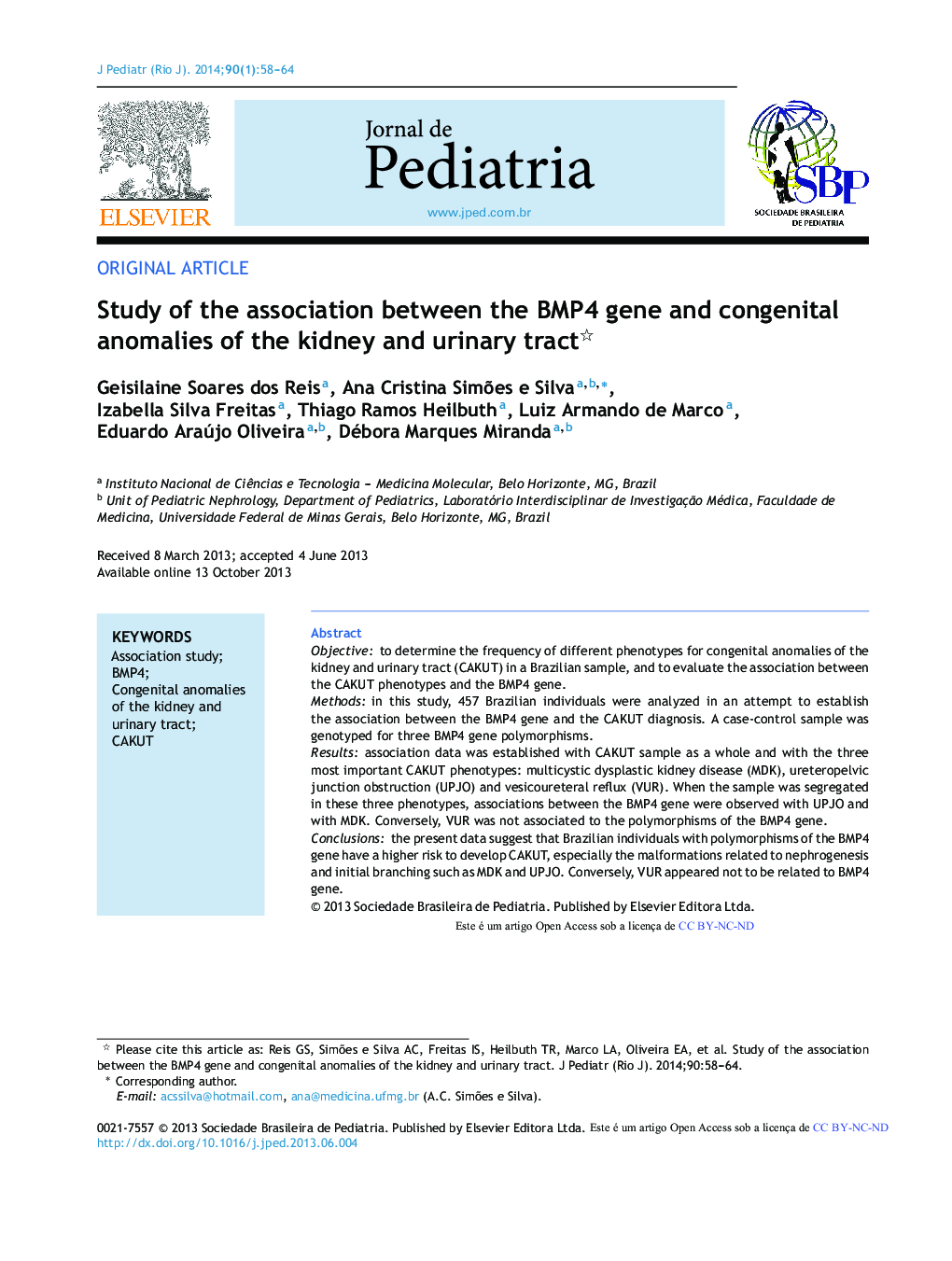| Article ID | Journal | Published Year | Pages | File Type |
|---|---|---|---|---|
| 4154121 | Jornal de Pediatria | 2014 | 7 Pages |
Objectiveto determine the frequency of different phenotypes for congenital anomalies of the kidney and urinary tract (CAKUT) in a Brazilian sample, and to evaluate the association between the CAKUT phenotypes and the BMP4 gene.Methodsin this study, 457 Brazilian individuals were analyzed in an attempt to establish the association between the BMP4 gene and the CAKUT diagnosis. A case-control sample was genotyped for three BMP4 gene polymorphisms.Resultsassociation data was established with CAKUT sample as a whole and with the three most important CAKUT phenotypes: multicystic dysplastic kidney disease (MDK), ureteropelvic junction obstruction (UPJO) and vesicoureteral reflux (VUR). When the sample was segregated in these three phenotypes, associations between the BMP4 gene were observed with UPJO and with MDK. Conversely, VUR was not associated to the polymorphisms of the BMP4 gene.Conclusionsthe present data suggest that Brazilian individuals with polymorphisms of the BMP4 gene have a higher risk to develop CAKUT, especially the malformations related to nephrogenesis and initial branching such as MDK and UPJO. Conversely, VUR appeared not to be related to BMP4 gene.
ResumoObjetivodeterminar a frequência de diferentes fenótipos de anomalias congênitas do rim e trato urinário (CAKUT) em uma amostra brasileira e avaliar a associação entre os CAKUT e o gene BMP-4.Métodosneste estudo, analisamos 457 indivíduos brasileiros em uma tentativa de estabelecer a associação entre o gene BMP-4 e o diagnóstico de CAKUT. As amostras de caso e de controle foram genotipadas em busca de três polimorfismos do gene BMP-4.Resultadosos dados de associação foram estabelecidos com a amostra de CAKUT como um todo e com os três fenótipos de CAKUT mais importantes: rim displásico multicístico (RDM), obstrução da junção ureteropélvica (UPJO) e refluxo vesico-ureteral (VUR). Quando a amostra foi separada nesses três fenótipos, encontramos associações entre o gene BMP-4 com UPJO e com RDM. Por outro lado, o VUR não foi associado aos polimorfismos do gene BMP-4.Conclusõesesses dados sugerem que os indivíduos brasileiros com polimorfismos do gene BMP-4 apresentam maior risco de desenvolver CAKUT, principalmente as malformações relacionadas a nefrogênese e ramificação inicial, como RDM e UPJO. Por outro lado, o VUR parece não estar relacionado ao gene BMP-4.
